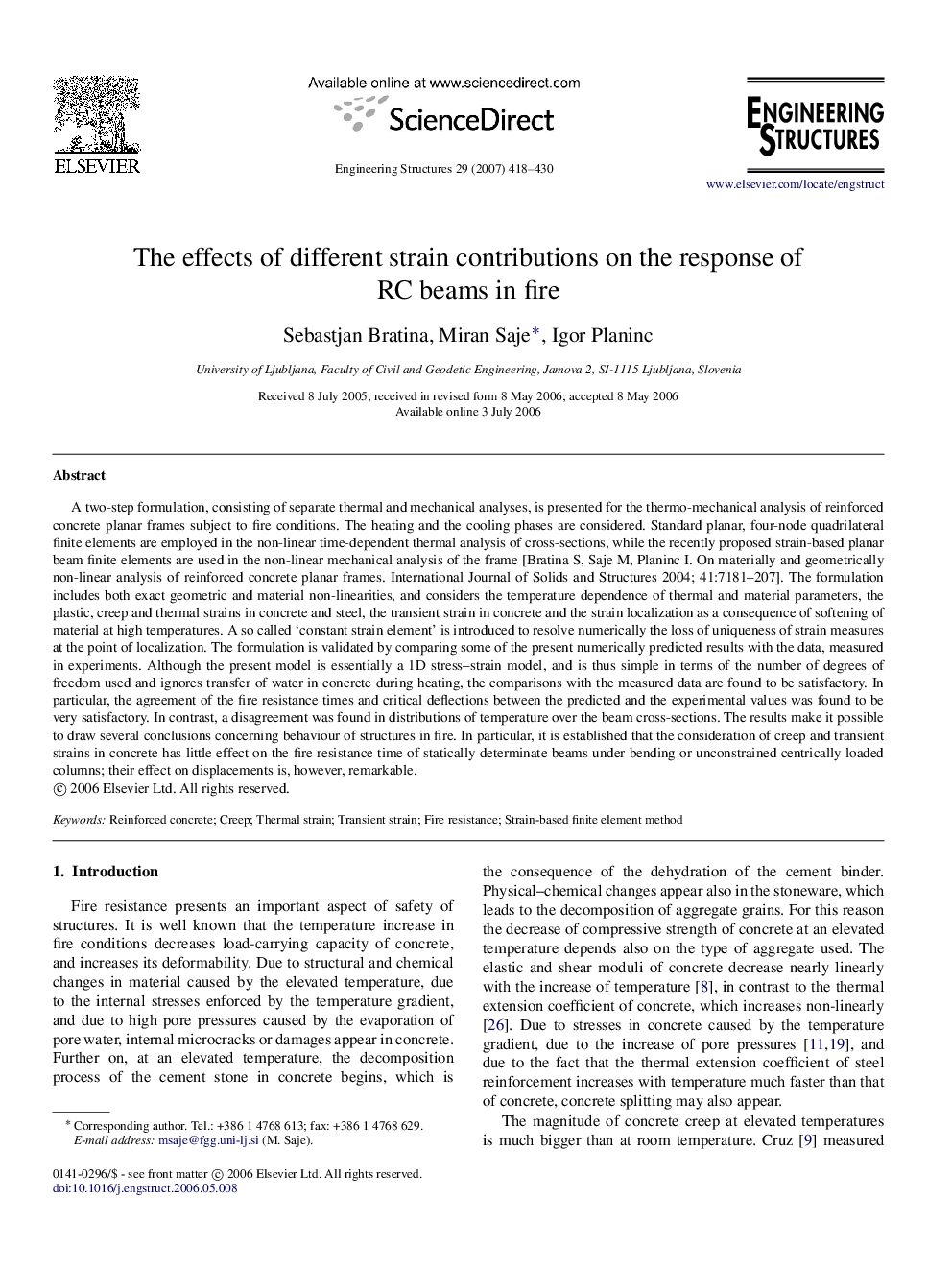| Article ID | Journal | Published Year | Pages | File Type |
|---|---|---|---|---|
| 269071 | Engineering Structures | 2007 | 13 Pages |
A two-step formulation, consisting of separate thermal and mechanical analyses, is presented for the thermo-mechanical analysis of reinforced concrete planar frames subject to fire conditions. The heating and the cooling phases are considered. Standard planar, four-node quadrilateral finite elements are employed in the non-linear time-dependent thermal analysis of cross-sections, while the recently proposed strain-based planar beam finite elements are used in the non-linear mechanical analysis of the frame [Bratina S, Saje M, Planinc I. On materially and geometrically non-linear analysis of reinforced concrete planar frames. International Journal of Solids and Structures 2004; 41:7181–207]. The formulation includes both exact geometric and material non-linearities, and considers the temperature dependence of thermal and material parameters, the plastic, creep and thermal strains in concrete and steel, the transient strain in concrete and the strain localization as a consequence of softening of material at high temperatures. A so called ‘constant strain element’ is introduced to resolve numerically the loss of uniqueness of strain measures at the point of localization. The formulation is validated by comparing some of the present numerically predicted results with the data, measured in experiments. Although the present model is essentially a 1D stress–strain model, and is thus simple in terms of the number of degrees of freedom used and ignores transfer of water in concrete during heating, the comparisons with the measured data are found to be satisfactory. In particular, the agreement of the fire resistance times and critical deflections between the predicted and the experimental values was found to be very satisfactory. In contrast, a disagreement was found in distributions of temperature over the beam cross-sections. The results make it possible to draw several conclusions concerning behaviour of structures in fire. In particular, it is established that the consideration of creep and transient strains in concrete has little effect on the fire resistance time of statically determinate beams under bending or unconstrained centrically loaded columns; their effect on displacements is, however, remarkable.
